L’Oréal-UNESCO For Women in Science | 2022 Edition
Introducing the 2022 L’Oréal Australia & New Zealand fellows
On Thursday 17 November, L’Oréal-UNESCO For Women in Science will honor the achievements of five female scientists in Australia and New Zealand at a ceremony in Melbourne, Victoria. The exceptional women in the early stages of their careers will be granted a prestigious Fellowship and valuable funding to help further important research.
Founded in 1998, the L’Oréal-UNESCO For Women in Science initiative has recognized 3,800 fellows globally and 64 locally with 500 scientific experts involved in the selection worldwide. Whilst promising advances have been made, there is still work to be done with the representation of women in STEM only increasing by 1 percent between the years of 2014–2019 in Australia.
According to an analysis of 2 million computer science papers in the USA between 1970 and 2018, researchers concluded that gender parity would not be reached in this field until the year 2100. Only 4 percent of those surveyed could name a female tech leader, with 2 percent of those stating Alexa or Siri*.
L’Oréal was founded by scientist, Eugène Schueller in 1909 and for over the past 20 years, the L’Oréal Corporate Foundation and UNESCO have been committed to increasing the number of women working in scientific research. L’Oréal continues to shine a light on scientific research and developments as the world needs science and science needs women.
“Each year through our For Women in Science program we see outstanding female scientists who are at the forefront of research, and yet there remains a significant global gender gap in all scientific fields. Through our Fellowships we hope to bring visibility to this issue and to these exceptional women by giving them a voice,” says Rodrigo Pizarro, CEO of L’Oréal Australia & New Zealand.
“To tackle the challenges we face in today’s world, we need to change systemic barriers such as unconscious bias and discrimination, and ensure research is inclusive of all genders. This year, the L’Oréal-UNESCO For Women in Science fellows are nothing short of inspiring and we are proud and excited to share their accomplishments in their unique field of expertise,” concludes Pizarro.
28%
The number of senior academic roles held by women in Australia & New Zealand
33%
Of the world's researchers are women
4%
of Nobel Prizes for Science have ever been awarded to women
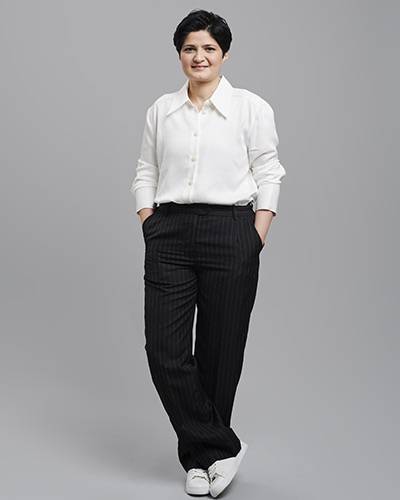
Macquarie University, NSW
Nanotechnology: the future of non-invasive early detection
We are all too familiar with how our breath can get us into trouble. Even without us knowing, the processes taking place in our bodies are creating gasses that come together to tell a story that we haven’t learnt how to read just yet.
But what if we could break down each component of our breath to understand what is happening behind the scenes? In the same way that dogs can detect happiness, stress, and even pregnancy from the way we smell, what if we too could find a way to understand our bodies without having to reach inside?
This is where Dr Noushin Nasiri steps in. Noushin is using nanotechnology to develop a new generation of cost-effective, miniaturised, yet powerful sensing technologies for recognising chemical molecules. Modelled on the structures of dog’s noses, Noushin’s sensors fit on the tip of your finger and will allow you to monitor your health from the comfort of your own home.
The idea of detecting disease by analysing human breath is not a new idea. In 400 BCE, Hippocrates mentioned that maybe breath aroma can be related to diseases, nd it is this possibility of potentially inexpensive diagnosis that has inspired Dr Nasiri’s research.
“Most of us only go to see the doctor once a year for an hour, which means that there are more than 8,000 hours of the year that our health goes unchecked. Our healthcare system currently operates on a ‘sick care’ basis, meaning we are required to feel sick before we can seek treatment. But by the time we feel unwell, it is almost always too late to intervene,” said Dr Nasiri.
Apart from the mental and physical toll this sick care system has on us, the medical burden on diagnosis alone is ~$79bn per year in Australia.
Noushin will develop the first low-cost, portable sensing technology for precise detection of key markers in complex gas mixtures such as human breath. Noushin’s research will revolutionise our healthcare system, making healthcare accessible to all, and establishing the first step in screening for complex diseases—no needles necessary!
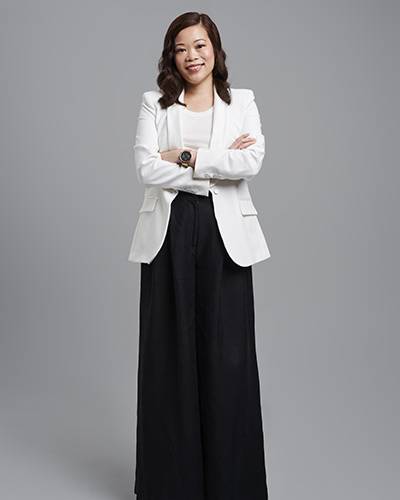
The Peter Doherty Institute for Infection and Immunity (Doherty Institute), VIC
Universally applicable cell-based therapy
The last few years have illustrated the critical role our immune systems play in protecting us from disease.
Our immune system consists of an army of agents known as cells, that work together to keep the body on alert against outside threats. T cells trigger our immune response and are informed by previous experiences and exposures to respond in ways that are best for our body. T cells' efficiency comes from their ability to recognise patterns that make you you, bespoke to each individual, meaning we can’t transfer our own T cells from one human into another who might require some healthy T cells.
These cells can be our best friends, protecting us from COVID and the flu, or some of themcan act like a misunderstood family member, turning on us—which is what happens in autoimmune diseases such as cancer or allergies. This is why some of us recover quicker from illnesses, and why some of us suffer from autoimmune diseases.
Researchers have recently discovered a novel type of T cells that recognise patterns that are in all of us. These universal T cells, also known as innate T cells, can have very diverse functions and present a possible alternative to existing therapies and medications. They can augment the immune response in those who are unable to recover as quickly, or they can suppress the immune response where needed.
“We believe that these unique cells can unlock so many possibilities to combat a wide range of diseases; and that’s what really excites me, something that is going to be more specific to the disease rather than obliterate everything in its path, and in turn give better success rates,” said Dr Koay.
Dr. Hui Fern Koay is committed to working towards improving our understanding of how these cells work, starting from their conception through to their final roles in the immune system. Fern will employ a ‘Blueprints and Brakes’ model to study the trajectory of these cells in our bodies. The ‘blueprints’ of these cells will identify how these cells emerge in the first place, and how they develop into cells dictating responses, and studying the ‘brakes’ on these cells will allow us to identify timepoints for intervention, to control appropriate functioning of these cells.
Fern’s work proposes a bright future for all immune-related disorders, particularly cancer treatments, where instead of obliterating all cells in your body with chemotherapy, we can use these innate T cells to employ a more targeted approach, where only the problematic areas are affected.
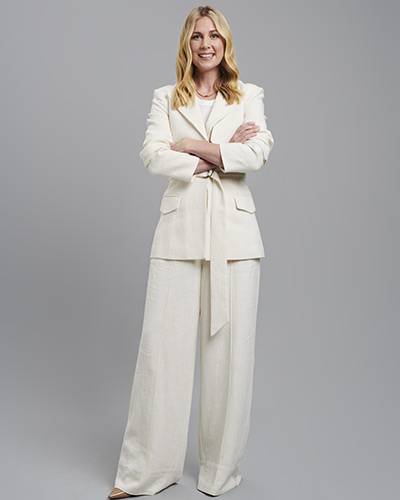
University Of Melbourne, VIC
Rebuilding oyster-reef shorelines for hazard risk reduction and habitat restoration
When we think of oysters, we don’t usually think of the word ‘reef’ immediately after. However, oyster reefs represent crucial components of our ecosystems, serving as habitats for hundreds of species. In addition to promoting biodiversity, oyster reefs establish the first line of defence against erosion and flooding—issues that are too often addressed with unsustainable man-made solutions. Today, only 1–8% of oyster reefs remain across Australia, with many having been lost to overharvesting, habitat degradation, and poor water quality.
Countries worldwide are investing in rebuilding these oyster reefs, with ‘living shoreline’ projects now restoring oyster reefs to stabilise eroding coastlines. Australia is contributing to this effort, with a 2020 federal investment of a $20 million shellfish ‘Reef Builder’ program, unlocking the opportunity for oyster reef restoration projects nationally.
Dr Rebecca Morris is conducting research into how rebuilding oyster reefs impacts coastal erosion and promotes biodiversity. Rebecca has previously shown that how you design these oyster reefs determines the outcomes that you get for shoreline stabilization and oyster habitation through projects in the United States and locally on the Victorian coastline.
Future implementation of oyster reefs as an adaptation strategy to coastal hazard risk reduction in Australia can be informed through an understanding of the efficacy of oyster reef restoration projects currently designed to provide a coastal defense co-benefit. Rebecca would like to investigate whether patterns she observed in US oyster reefs will translate to native Australian oyster reefs.
“So many of us flock to the beach when we need a boost of energy; the cool sea breeze seems to have an instant effect on lifting our moods. We love the beach, but we are also the cause of so much damage,” said Dr Morris.
Rebecca’s research will help inform how the design of an oyster reef impacts on the delivery of coastal defense and local habitat, in the context of Australian oyster species. This will help in reconstructing the most effective oyster reefs that will allow us to conserve coastal ecosystems under close threat of repercussions from climate change.
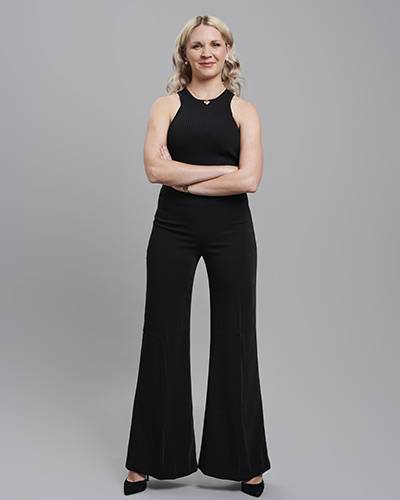
WEHI, VIC
Cells rising from the ashes: the dance of death keeping us alive
Every 10 seconds, about 10 million cells within our bodies will die, yet here we are, still standing. Cell death is a normal part of our body’s regulation needed to remove old, damaged or infected cells within the body.
Although the process of cell death is essential to keep us healthy, it requires a fine balance. Too much cell death can lead to neurological disorders like Alzheimer’s disease where the cells in the brain degrade. In contrast, too little cell death may lead to the rapid expansion of cancer cells. Importantly, once our cells die, they also need to be quickly removed.
Dying cells are removed by a specialized cell-type call phagocytes – essentially, the garbage truck cells of the body. Once they have been instructed to die, our cells use an array of molecular messages to help their removal. This includes releasing ‘find me’ signals to tell the phagocyte where they are, and ‘eat me’ signals that tell the phagocyte which cell to eat or, ‘engulf’.
This process of dying cell engulfment is vital as the accumulation of dying cells is a well-known trigger of inflammation and inflammatory disease.
Inflammation is like the body’s way of ringing the alarm bells however, just like cell death, it also requires a fine balance. Too little inflammatory signals may be insufficient to bring in enough reinforcements to help fight the danger. In contrast, too much inflammation can overwhelm the body and be extremely harmful. Therefore, heightened levels of inflammation are often a hallmark of devastating diseases like viral or bacterial infections and autoimmunity
“Cells don’t simply just give up and die, but they go out in fashion, with over 12 different ways that our individual cells can die! My research looks at how immune cells can remove dying cells, and the importance of this in preventing harmful inflammation and disease,” said Dr. Atkin Smith
Dr Georgia Atkin Smith will investigate how dying cells are removed to prevent harmful inflammation. She aims to discover new molecular factors that aid the recognition and removal of dying cells, and assess how the messages released by dying cells and phagocytes work together to maintain the perfect balance of inflammatory signaling.
Georgia’s research will help us better understand how inflammation is caused, and importantly, how it is resolved. Altogether, this project will generate a foundation of new knowledge we need to maintain the correct balance of inflammation during disease.
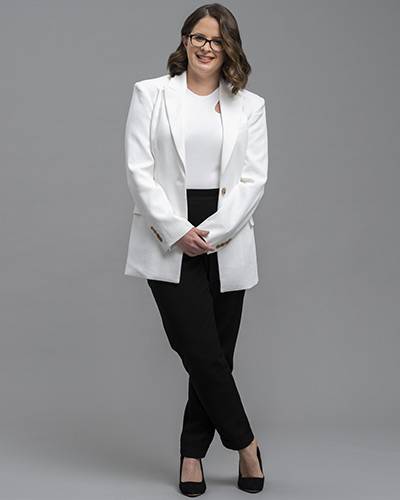
University Of Canterbury, NZ
Healthy humans need healthy environments
Time spent in nature has measurable physical and psychological health benefits, providing compelling reasons to conserve nature in urban areas. People who regularly spend time in nature experience improved psychological wellbeing (mental restoration and lower stress levels), a reduced risk of cardiovascular diseases, and greater opportunities for socialization and physical activity.
With the world rapidly moving towards digitalization and urbanization, it is becoming increasingly difficult to find an oasis of greenery amidst our concrete jungles. So, how do we ensure that we make the most of our time spent outdoors?
Research has shown that wellbeing is directly influenced by the quality of these natural spaces—as determined by the biodiversity and health of natural species in these areas. We now know that higher biodiversity in areas dominated by plants, or ‘green spaces’, is directly correlated with higher psychological and physical wellbeing. However, these relationships have not yet been explored in ecological spaces dominated by water bodies or ‘blue spaces’.
While the health benefits of nature are increasingly understood, it remains unknown if these benefits increase with the ecological quality (i.e., biodiversity and organismal health) of habitats. Natural spaces with higher biodiversity are deemed to be of higher quality which may confer greater health benefits, providing a rare win-win conservation opportunity.
“I feel that I am my best self when I am near nature. As an environmental physiologist, I am driven by my passion to conserve nature. I hope that my research motivates everyone to care about the environment,” said Dr. Rodgers.
Dr Essie Rodgers is working towards understanding how the quality of urban blue spaces can influence our wellbeing. Using a range of high-throughput molecular techniques, Dr. Rodgers will assess the number of species populating blue spaces and the health of organisms in the space. With the help of verified survey questions, Dr. Rodgers will gather data about the mental and physical health of individuals in the vicinity of blue spaces.
Essie’s work will deliver novel insights into the links between ecosystem health and human health, whilst also providing local and international governments with the knowledge necessary for evidence-based conservation planning.
Media contacts
KELLY FALL-ARMYTAGE
Media Relations Manager
L’Oréal Australia
P: 0423 896 480
E: [email protected]
SAMIRA IMRAN
For Women in Science Coordinator
L'Oréal Australia
P: 0483 393 121
E: [email protected]
About L'Oréal Australia & New Zealand
L’Oréal Australia & New Zealand are part of the L’Oréal Group. L’Oréal has devoted itself to beauty for 113 years. With its unique international portfolio of 35 diverse and complementary brands, the Group generated sales amounting to 32.28 billion euros in 2021 and employs 85,000 people worldwide. As the world’s leading Beauty Company, L’Oréal is present across all distribution networks: mass market, department stores, pharmacies and drugstores, hair salons, travel retail and branded retail.
The Group has 31 brands across Australia and New Zealand - available across all channels nationwide. The teams in Australia & New Zealand are dedicated to L’Oréal’s sense of purpose “Create the beauty that moves the world”.
About For Women in Science
Today, only 33% of researchers are women with less than 25% making up the most senior leadership positions, and only 4% of Scientific Nobel Prizes have been awarded to women. This is why, for over the past 20 years, the L’Oréal Corporate Foundation and UNESCO have been committed to increasing the number of women working in scientific research.
In 1998, L’Oréal and UNESCO founded the For Women in Science program to promote and highlight the critical importance of ensuring greater participation of women in science. The For Women in Science program recognizes the achievements of exceptional female scientists at the early stages of their careers and awards them with a Fellowship to help further their research.